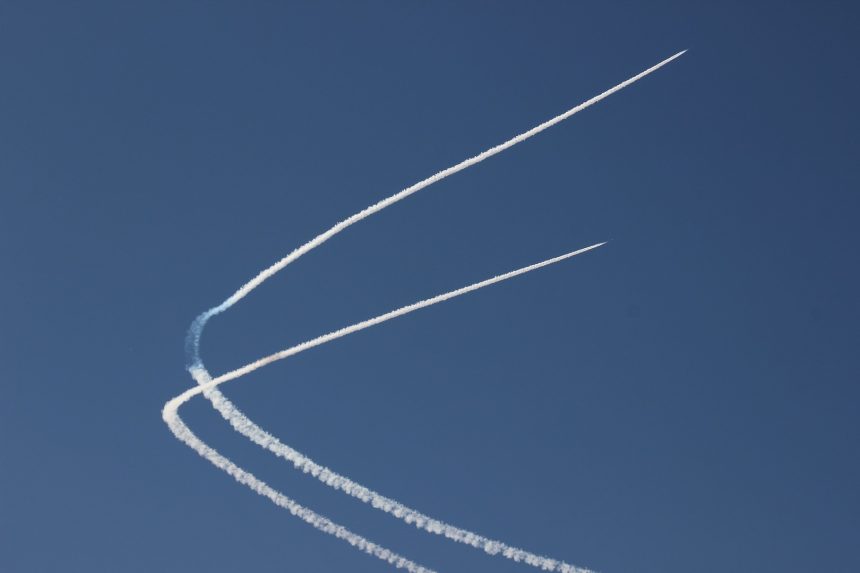Climb with us to the top of Coyote Summit to see some real Red Flag 17-2 action!
Red Flag is a major event in the military aviation community, known by both pilots, spotters and other fans. In a nutshell, it is the most important exercise in the world, both in terms of realistic training and participating units, and it’s held 4 times a year. It is staged from one of the world’s biggest and most famous airbases: Nellis Air Force Base, north of Las Vegas, Nevada.
Much has already been written about Red Flag so I won’t come back to the origins, dating back to the Vietnam War; nor will I describe the Nellis Test and Training Range (NTTR), where the wargame takes place, nor the 64th Aggressor Squadron whose involvement as a realistic opposition makes Red Flag what it is.
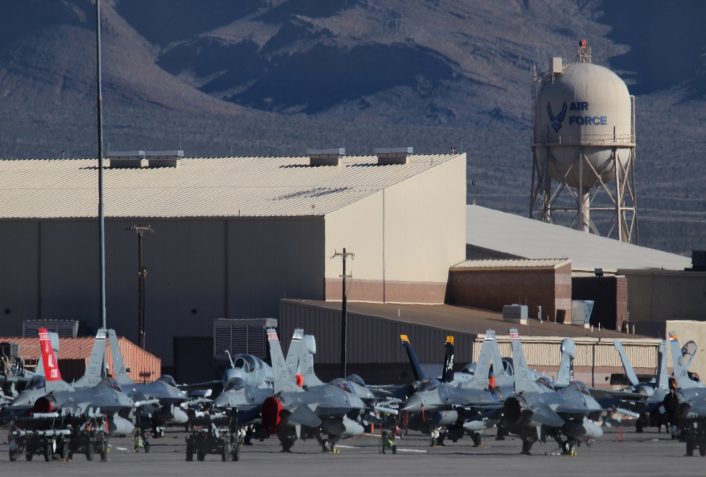
Recently, I had the opportunity to spend a few days in Nevada, during Red Flag 17-2, and watch these machines around the base. The unit panel consisted mainly of F-16C squadrons :
- the 55th FS from Shaw AFB with few jets from 77th and 79th FS;
- the Alabama ANG 100th FS with two jets decorated with beautiful red Tuskegee tails;
- the Colorado ANG 120th FS;
- RNLAF 322nd sqn F-16s based in Leeuwarden, with some jets from Tucson (with mixed Arizona ANG and dutch markings).
The only other jet players were Spanish Ala 111 with their Eurofighters, supported by KC-130H from Ala 312, and 493rd FS Eagles from Lakenheath.
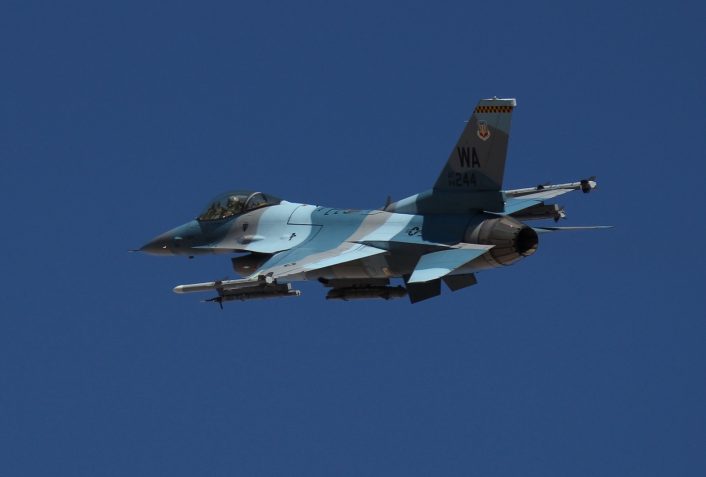
After two days of shooting tons of pictures (you can have a glimpse here), and wanting more than take-offs and landings at the base, I was looking for some more action. My plan was to go and see and hear the aerial war in the high desert of Nevada, the natural habitat of these metal birds.
The place is known as Coyote Summit and is a two hours drive from Sin City, heading north. Passing Hancok Summit on the E.T. Highway (also known as US 375), one can see the vastness of the USAF playground. On the left, there’s a trail leading to Area 51, invisible behind a small ridge. Thirty miles ahead is Rachel, and my plan is to stop at a small gap, up the road where most of the Blue players (Blue air are the participant units of Red Flag, while Red air with their Aggressor F-16s simulate the enemy) should fly by, low or high.
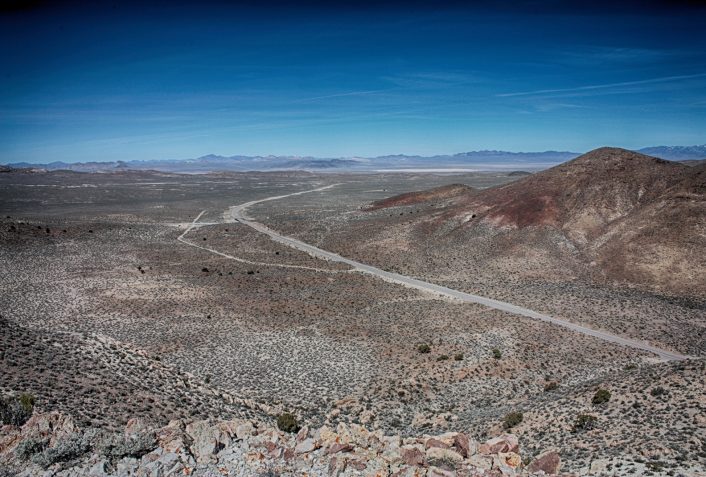
So here I am, on this clear Nevada weather morning, sitting on top of Coyote Summit, a 200 ft hill at the “gate” of the Range (aka the NTTR), and waiting.
This particular place is very well-known among spotters and by noon, we’re 5 people there, chatting about aviation, and catching in a hurry our cameras at every engine sound we hear above the wind.
At around 1PM, things start moving with 2 white pickups driving fast accross the desert south of our vantage point. They’re not going to set up a simulated Roland SAM as we initially believe. They just drop a guy alone in the bushes and carry on their drive and stay in a deep creek 2 miles away. Radio chatter begins, after a long silent morning, between the pickups and some range controller. We understand that they should have gone to “Red gate”, instead of “Blue gate”, but it seems to be a bit late to fix so the guy on the ground will stay there.
At 2:20PM, we hear some tactical comms on the radio: U.S. F-15Cs and Spanish Typhoons are setting up their Combat Air Patrol (CAP), well east of our position. Cylon flight will take New York CAP (should be above Hiko as we see the contrails) and Pulsar flight will go to Alaska CAP, above Worthington Peak.
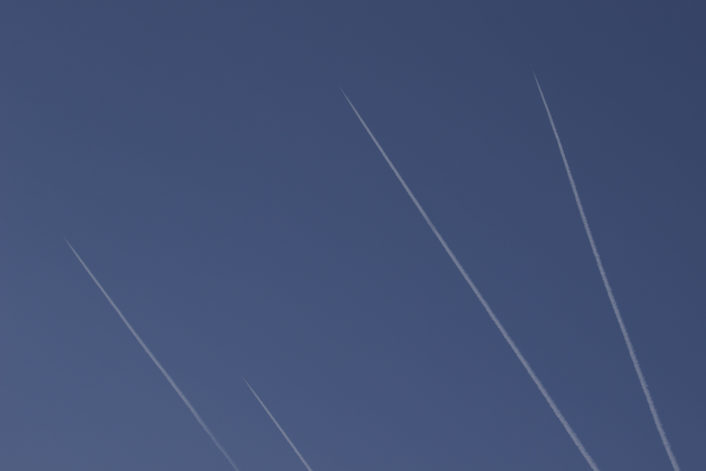
“Vul time” has been delayed because some players are still on the tarmac at Nellis, and now, according to “Words Bravo,” this Vul time is 2245Z (or 2:45PM). And that’s precisely then that we see “the Wall”, formed by 4 F-15Cs and their contrails, pushing west towards the Red players. The opposition is now just a pair of F-16Cs Aggressors. But soon, as the fight develops, more aircrafts from both sides will converge above Rachel and fight at high altitude.
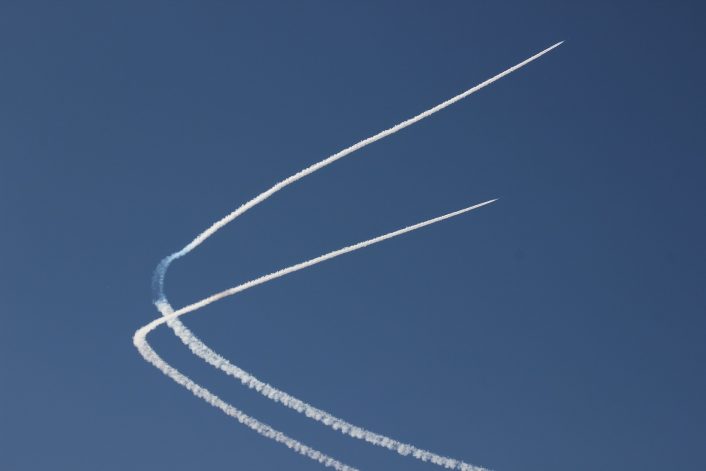
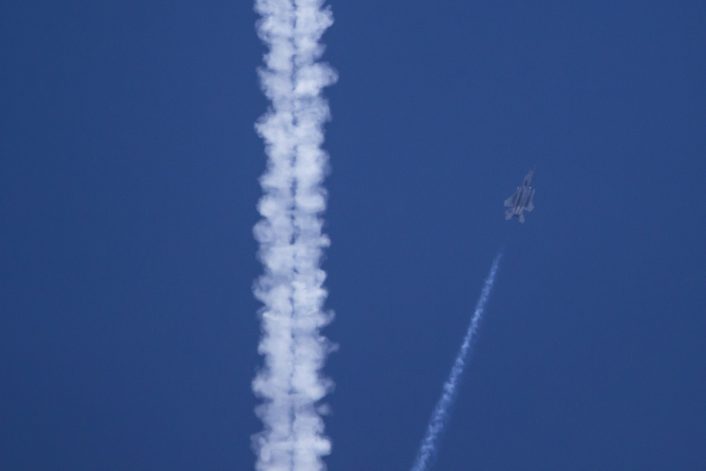
Shots are called on the radio, e.g. “Pulsar 1, Fox 3, bullseye 080 10 23 thousand!”
“Copy shot” says a controller, and a few seconds later some voice confirms the shots as kills (“Mig 3 dead”), or misses (“Pulsar 1, shot trashed).
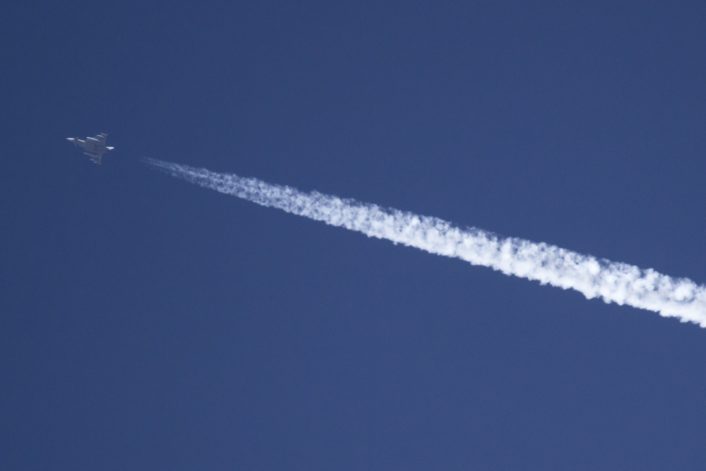
The action never stops, some Aggressors come back (“Cylon 3, pop-up single, BRA 250, 15 miles, 26 thousand, regen”), some Blue players get shot, but mostly Red Air gets hurt and regens regularly. Spanish Typhoons and Dutch Vipers drop flares every now and then, calling out “Spike” or “SAM” based on what their RWR gear tells them.
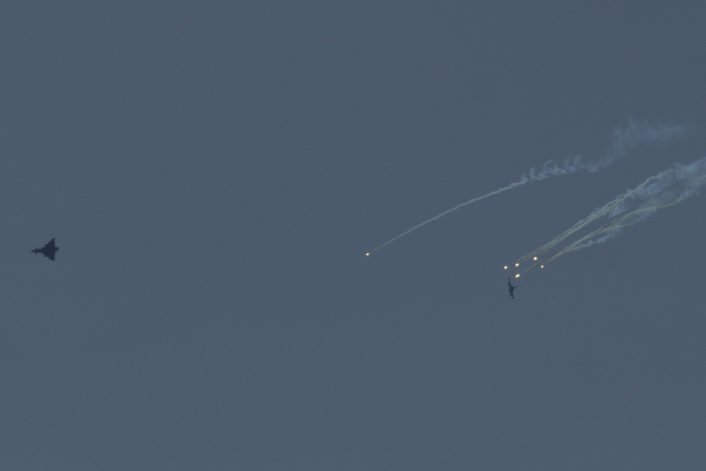
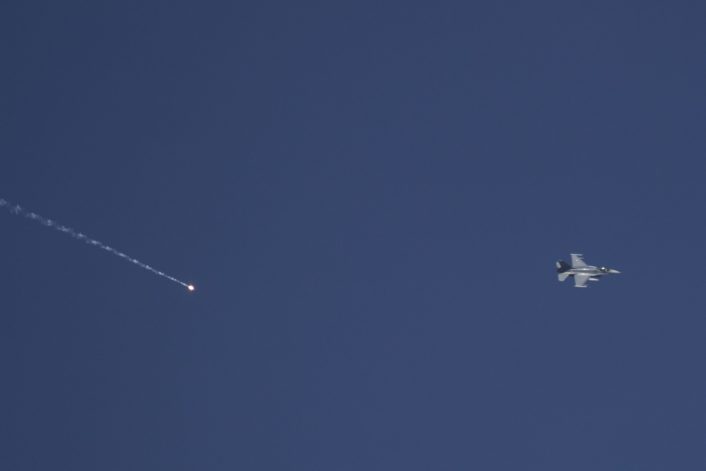
While these jets fight overhead, sometimes with an impressive double sonic boom, we can hear some choppers approaching low from the southeast.
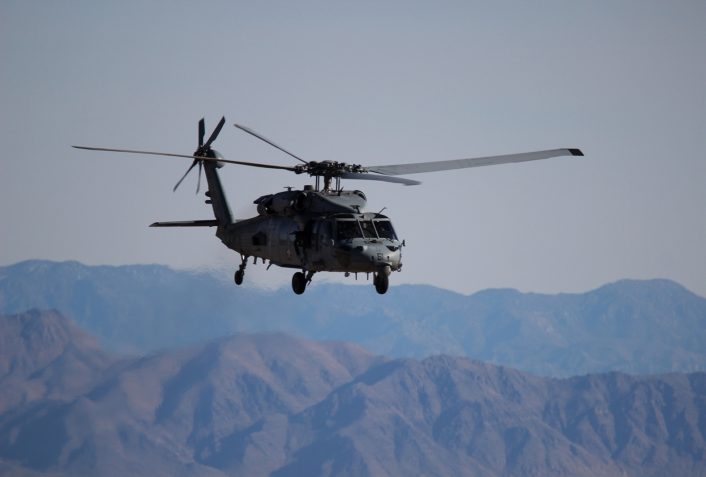
Two Navy MH-60S from HSC-21 turn for a few minutes before converging toward our lonely guy, not far from us.
I’m as close to the action as I’ll ever be and soon, we hear jets coming for help as the Sandy fighters used to fly in Vietnam. These are 2 F-16Cs from the 120th FS, with their Colorado ANG tails, circling about 1,000 feet above us and protecting what is now clearly a “downed pilot extraction.”
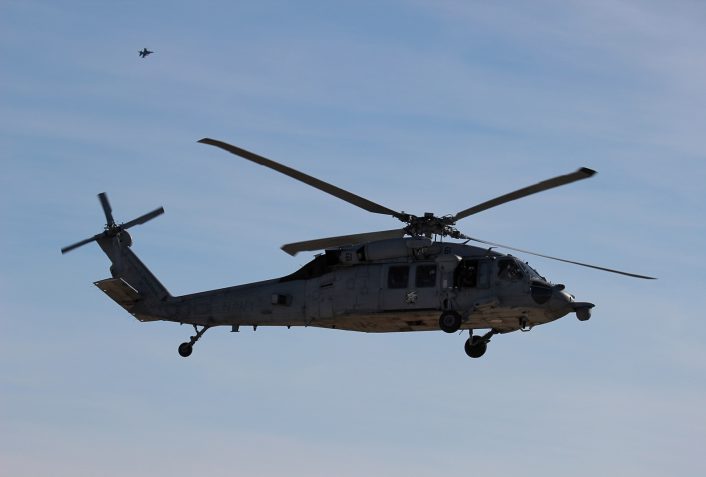
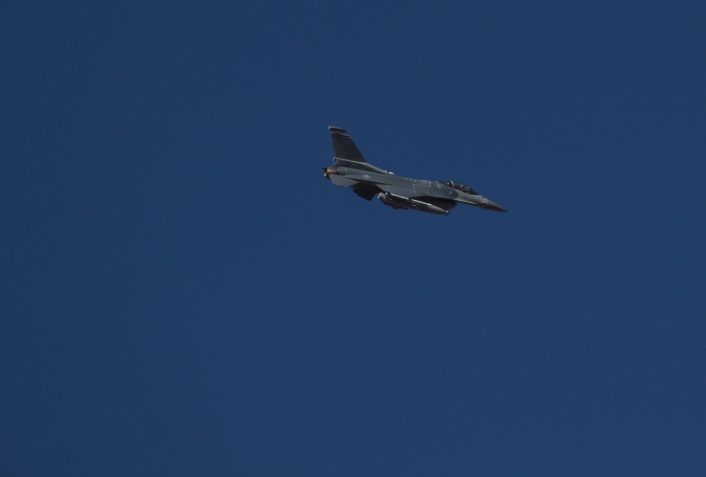
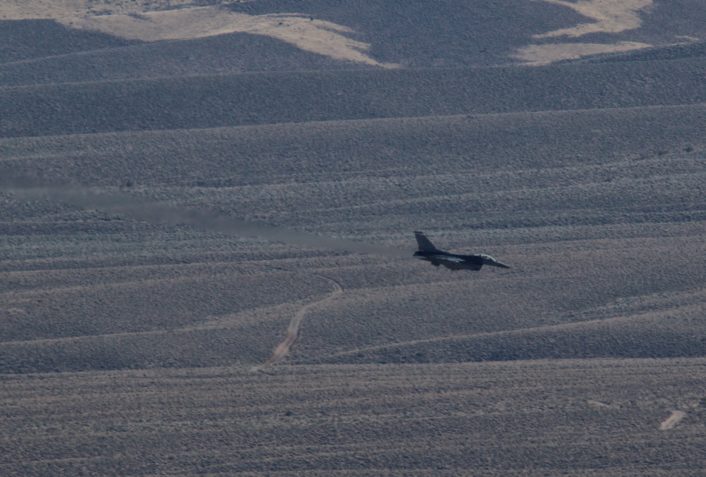
This lasts for 10 minutes and the Vipers even simulate an attack on the hidden white pickups. The choppers take off with their precious cargo in and head to the southeast.
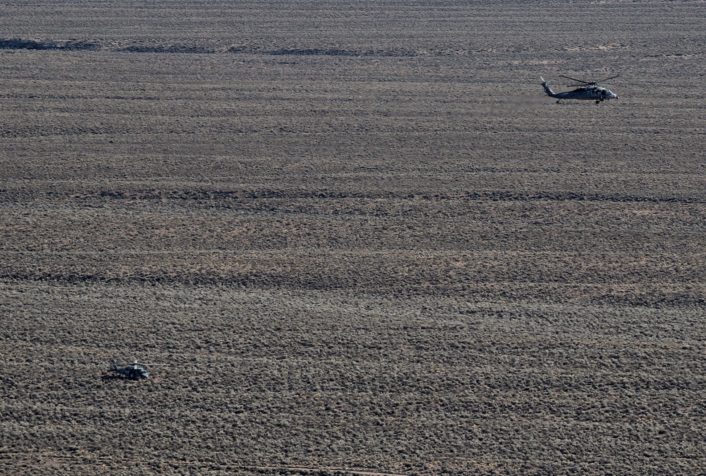
The fighter jets activity now seems to subside a bit.
Some are already calling “RTB” (meaning Return to Base) and some sanitize the area while the strikers egress. I haven’t seen any striker as they must have flown through a route north of Rachel. It is also interesting to add that all the air combat seen today, at least the kills, were BVR (Beyond Visual Range) or nearly – no WVR (Within Visual Range) dogfights were spotted.
At about 4:15, two hours after the first thunderous noises, we hear on the frequency “All players, all players, knock it off, knock it off”: this is the end sign and everybody now RTB.
This was a long day and pretty intense afternoon which I’ll never forget. Hundreds of photos were taken. But what’s most important when coming here, is the possibility to listen to the air-to-air communications with a UHF scanner: the best way to be immersed into the action.
Thanks to Aviationist Todd Miller for all the precious info about aviation photography and Coyote Summit area.
Related articles

